

Miniature Circuit Breaker (MCB) Trips: Causes and How To Reset
- February 12, 2024

Miniature Circuit Breakers, commonly known as MCBs, are essential components in modern electrical systems. They serve as protective guardians, automatically switching off the circuit to prevent damage from overcurrents.
In this article, we’ll get into what causes MCBs to trip and provide practical guidance on resetting them to maintain electrical safety in your home or workplace.
Understanding Miniature Circuit Breakers (MCBs)
What is an mcb.
An MCB is an automatically operated electrical switch designed to protect electrical circuits from damage caused by excess current, be it from an overload or a short circuit. These compact devices are integral in domestic, commercial, and industrial settings, forming a critical part of the circuit-breaking family.
How MCBs Work
MCBs are triggered by overcurrent, which is an electrical current exceeding a safe limit. Inside an MCB, a bimetallic strip heats and bends during an overload, causing the breaker to trip. This action interrupts the circuit, preventing potential hazards. MCBs use separate mechanisms to detect overloads and short-circuits, ensuring comprehensive protection.
Common Causes for MCB Tripping
Overload protection.
An overload occurs when the current exceeds the MCB’s capacity. This excessive current heats the bimetallic strip, causing the MCB to trip and break the circuit. This is a common scenario in households where multiple high-energy devices operate simultaneously.
Short-Circuit Situations
Short circuits are sudden surges of current flowing through a low-resistance path. They trigger the magnetic element in the MCB, which rapidly disconnects the circuit, preventing damage and potential fire hazards.
Electrical Faults and External Influences
Other factors, such as voltage spikes, faulty appliances, or damaged wiring, can also cause MCBs to trip. Regular inspection and maintenance are key to preventing such occurrences.
Types of MCBs and Their Applications
Different mcb types explained.
MCBs come in various forms – types A, B, C, D, K, and Z, each tailored for different electrical environments and surge strengths. Understanding these types helps in selecting the right MCB for your specific needs.
Choosing the Right MCB
Selecting an MCB involves considering its tripping characteristics, breaking capacity, and the number of poles. Matching these factors with your circuit’s requirements is crucial for optimal protection.
Step-by-Step Guide to Resetting MCBs
How to safely reset an mcb.
Resetting an MCB is straightforward – locate the tripped MCB in your consumer unit and toggle its switch back to the ‘ON’ position. If the fault has been resolved, this should restore power.
Troubleshooting Persistent Tripping
If the MCB trips again after resetting, it indicates an unresolved issue in the circuit. Unplug all devices and reset again. If the problem persists, further investigation or professional help might be required.
When to Call a Professional
If you’re unable to identify the cause of the trip or if the MCB doesn’t reset, it’s time to contact a professional electrician. Persistent tripping can indicate serious electrical issues that require expert attention. Don’t hesitate to safeguard your electrical systems and ensure your safety.
For comprehensive fault-finding solutions and professional assistance, Wave Electrical Solutions can help . Our team of skilled electricians is ready to diagnose and resolve any electrical concerns you may have, offering dependable services tailored to your needs.
FAQs About MCBs
Q1. how do i test an mcb after installation.
Use a suitable voltage meter to test the MCB and manually inspect its switching mechanism for proper functioning.
Q2. Can different brands of MCBs be mixed?
While specifications are more critical than brands, mixing different brands in the same installation is generally not recommended for reliability and warranty reasons.
Q3. What are the advantages of MCBs over fuses?
MCBs provide better protection in lower voltage settings and don’t require replacement after tripping, unlike fuses.
Understanding the causes of MCB tripping and mastering the reset process are key to maintaining electrical safety. Regular checks and timely interventions can prevent potential hazards and ensure the smooth functioning of your electrical systems. If you’re facing persistent issues with your MCBs or need expert guidance, feel free to reach out to Wave Electrical Solutions for professional fault-finding services. Additionally, for direct assistance or inquiries, visit our contact page .

- 0800 112 6644 (Freephone)
- 07441 114466 (Mobile)
- [email protected]
- Text us! (SMS)
- Message us on Whatsapp!
- Chat on Facebook Messenger
- Domestic Electrical Works
- Rewires & New Installations
- EV Charging
- Smart Homes / Home Automation
- Outdoor Electrics
- Renewable Energy
- Holiday & Letting Property
- Commercial Electrical Works
- Emergency Services
- Other Services
Positive Connections
Colin’s project: faulty sockets & lighting issues, jane’s project: outdated & malfunctioning wall light, karen’s project: chirping smoke alarms, angie’s project: kitchen extractor fan, join our team.
Ready to make a difference? Explore exciting career opportunities with us!
Wave Electrical Solutions Ltd
- Hazard Categories and Special Symbols
- Please Note
- Validity Scope
- Document Scope
- Related Documents
- Masterpact MTZ2/MTZ3 Range Description
- Masterpact MTZ2/MTZ3 Range Convention
- Masterpact MTZ2/MTZ3 Circuit Breakers
- Masterpact MTZ2/MTZ3 Switches
- Masterpact MTZ2/MTZ3 Neutral Position on Four Pole (4P) Devices
- Fixed Masterpact MTZ2/MTZ3 Description
- Fixed Masterpact MTZ2/MTZ3 Accessories Description
- Fixed Masterpact MTZ2/MTZ3 Terminal Block Description
- Drawout Masterpact MTZ2/MTZ3 Definition
- Standard Masterpact MTZ Circuit Breaker or Switch Description
- Masterpact MTZ Circuit Breaker with ArcBlok™ Technology Description
- Drawout Masterpact MTZ2/MTZ3 Accessories Description
- Masterpact MTZ2/MTZ3 Cradle Description
- Masterpact MTZ2/MTZ3 Cradle Accessories Description
- Masterpact MTZ2/MTZ3 Cradle Terminal Block Description
- Masterpact MTZ2/MTZ3 Product Identification Label
- Masterpact MTZ2/MTZ3 Product Checked Label
- Masterpact MTZ2/MTZ3 Accessory Side Label
- Masterpact MTZ2/MTZ3 Faceplate Label
- Masterpact MTZ2/MTZ3 QR Code
- Control Unit Layout
- Micrologic X Status LEDs
- Local HMI Display Screen with Contextual and Dedicated Buttons
- NFC Communication Zone
- Bluetooth Activation Button and LED
- Micrologic X Control Unit Test Button
- Micrologic X Control Unit Test/Reset Button
- Micrologic X Control Unit Mini USB Port
- Micrologic X Control Unit Overload and Trip Cause LEDs
- Micrologic X Internal Battery
- Micrologic X VPS Voltage Power Supply Module
- Micrologic Control Unit QR Code
- Micrologic X Control Unit Identification Number
- Micrologic X Control Unit Type
- Micrologic X Sensor Plug
- Go2SE Presentation
- Go2SE Landing Page Description
- Go2SE Characteristics
- Go2SE Download Documents
- Go2SE Download Customer Care App
- Go2SE Download EcoStruxure Facility Expert App
- Go2SE Safe Repository
- Go2SE Download Masterpact MTZ Mobile App
- Go2SE Purchase Additional Features
- Masterpact MTZ—Ambient Temperature
- Masterpact MTZ—Extreme Atmospheric Condition
- Masterpact MTZ—Industrial Environments
- Masterpact MTZ—Vibration
- Masterpact MTZ—Altitude
- Masterpact MTZ—Electromagnetic Disturbances
- Masterpact MTZ2/MTZ3 Device Status Indication
- Masterpact MTZ2/MTZ3 Device Status Description
- Masterpact MTZ2/MTZ3 Device Auxiliary Switches (OF)
- Masterpact MTZ2/MTZ3 Anti-Pumping Function
- Charging the Masterpact MTZ2/MTZ3 Closing Spring
- Masterpact MTZ Manual Operation with the Spring Charging Handle (MCH)
- Masterpact MTZ Electrical Operation with a Spring Charging Motor (MCH)
- Masterpact MTZ Operation According to Control Mode Configuration
- Masterpact MTZ2/MTZ3 Operation in Manual Mode
- Masterpact MTZ2/MTZ3 Operation in Auto: Local Mode
- Masterpact MTZ2/MTZ3 Operation in Auto: Remote Mode
- Setting the Micrologic X Control Mode
- Displaying the Micrologic X Control Mode
- Micrologic X Control Mode Predefined Events
- Conditions Required to Open
- Opening the Masterpact MTZ2/MTZ3 Mechanism in All Control Modes
- Opening the Masterpact MTZ2/MTZ3 Mechanism in Auto Control Mode
- Conditions Required to Close
- Closing the Masterpact MTZ2/MTZ3 Mechanism
- Inhibiting the Masterpact MTZ2/MTZ3 Closing Function
- Conditions Required to Reset
- Resetting the Masterpact MTZ2/MTZ3 Mechanism
- Conditions for Engaging the ERMS Function
- Energy Reducing Maintenance Setting (ERMS) Function Operating Principles
- Engaging the ERMS Function
- Disengaging the Energy Reducing Maintenance Setting (ERMS) Function
- Masterpact Shunt Close (XF), Shunt Trip (MX) and Undervoltage Release (MN) Accessories
- Masterpact Shunt Close (XF)
- Masterpact Shunt Trip (MX)
- Masterpact Undervoltage Release (MN)
- Masterpact Communicating Internal Isolation Module
- Masterpact Electrical Closing Pushbutton (BPFE)
- Masterpact Ready-to-Close Contact (PF)
- Masterpact Spring Charging Motor (MCH)
- Masterpact Electrical Remote Reset (RES)
- Masterpact ERMS Switch Module (ESM)
- Masterpact Grounding Kit (KMT)
- Masterpact Mechanical Operation Counter (CDM)
- Masterpact ULP Port Module
- Masterpact Embedded Ethernet Interface (EIFE)
- Masterpact Ethernet Interface (IFE) for One Circuit Breaker
- Masterpact Ethernet Switchboard Server (IFE)
- Masterpact IFM Modbus-SL (RTU) Interface for One Circuit Breaker
- Masterpact IO Input/Output Application Module
- Use a Platform Lift for Masterpact MTZ2/MTZ3 Device
- Lifting a Masterpact MTZ2/MTZ3 Device
- Lifting a Masterpact MTZ2/MTZ3 Cradle
- Masterpact MTZ2/MTZ3 Drawout Handling Conditions
- Masterpact MTZ2/MTZ3 Drawout Positions
- Masterpact MTZ2/MTZ3 Drawout Position Contacts
- Masterpact MTZ2/MTZ3 Drawout Position Contact Without EIFE Ethernet Interface
- Masterpact MTZ2/MTZ3 Drawout Position Contacts with EIFE Ethernet Interface
- Masterpact MTZ2/MTZ3 Cradle Management Function
- Racking Out from Connected to Test Position
- Racking Out from Test to Disconnected Position
- Racking-In from Disconnected to Test Position
- Racking In from Test to Connected Position
- Masterpact MTZ2/MTZ3 Device Removal
- Lifting the Masterpact MTZ2/MTZ3 Device
- Masterpact MTZ2/MTZ3 Circuit Breaker Weights
- Masterpact MTZ2/MTZ3 Optional Cradle Rejection Feature
- Installing Masterpact MTZ2/MTZ3 Devices in the Cradle
- Masterpact MTZ2/MTZ3 VBP Pushbutton Locking Accessory
- Locking the Masterpact MTZ2/MTZ3 Pushbuttons
- Masterpact MTZ2/MTZ3 VCPO OFF-Position Locking Accessory
- Locking the Masterpact MTZ2/MTZ3 Device Open with VCPO
- Unlocking the Masterpact MTZ2/MTZ3 Device Locked with VCPO
- Masterpact MTZ2/MTZ3 VSPO OFF-Position Locking Accessory
- Locking the Masterpact MTZ2/MTZ3 Device Open with VSPO
- Unlocking the Masterpact MTZ2/MTZ3 Locked Open with VSPO
- Locking a Masterpact MTZ2/MTZ3 Cradle in with VSPO
- Locking a Masterpact MTZ2/MTZ3 Cradle with Padlocks
- Unlocking a Padlocked Masterpact MTZ2/MTZ3 Cradle
- Locking a Masterpact MTZ2/MTZ3 Cradle with Keylocks
- Unlocking a Keylocked Masterpact MTZ2/MTZ3 Cradle
- Masterpact MTZ2/MTZ3 Cradle Locking with VSPD Keylock Accessory
- Converting the Masterpact MTZ2/MTZ3 Cradle for Keylocking
- Locking the Mastepact MTZ Shutters with Shutter Position Indication and Locking Accessory
- Masterpact MTZ2/MTZ3 Cradle Rejection
- Masterpact MTZ2/MTZ3 Cradle Rejection Pin Locations
- Masterpact MTZ2/MTZ3 Cradle Rejection Recommended Pin Combinations
- VPEC Door Interlock Accessory
- Using VPEC Accessory to Lock the Equipment Door
- Unlocking Equipment Door Locked with VPEC Accessory
- VPOC Open-Door Racking Interlock
- Activating the VPOC Racking Interlock
- Deactivating the VPOC Racking Interlock
- Masterpact MTZ2/MTZ3 IPA Cable-Type Door Interlock
- Mechanical Interlocking Between Two Masterpact MTZ Devices
- Mechanical Interlocking Between Three Main Masterpact MTZ Device
- Mechanical Interlocking Between Two Main and One Tie Masterpact MTZ Devices
- Mechanical Interlocking Between Two Main and One Replacement Masterpact MTZ Devices
- Masterpact MTZ DAE Automatic Spring-Discharge Interlock
- Inserting the Racking Handle with IBPO Racking Interlock Installed
- Notification of a Masterpact MTZ Trip or Alarm
- Identifying the Cause of a Masterpact MTZ Trip or Alarm Using the Micrologic X Control Unit
- Diagnostic Data after a Masterpact MTZ Circuit Breaker Trip
- Using the Display Screen and LEDs to Find the Cause of a Trip
- Using the Display Screen and LEDs to Find the Cause of an Alarm
Masterpact MTZ Reset Sequence
Identifying the masterpact mtz trip cause, acknowledging a trip message on micrologic x control units, clearing the electrical fault before reclosing the masterpact mtz circuit breaker, inspecting the masterpact mtz circuit breaker and switchboard after a trip on a short circuit.
- Masterpact MTZ Circuit Breaker Reset Sequence
- Masterpact MTZ Circuit Breaker Trip Cause Identification
- Micrologic X Display Screen Trip Message Acknowledgement
- Recommended Actions After a Trip Due to Invalid Micrologic X Control Unit Self Test
- Micrologic X Control Unit Diagnosis Sequence
- Identifying the Micrologic X Control Unit Alarm
- Acknowledging the Alarm on the Micrologic X Display Screen
- Recommended Action after Detection of a High Severity Micrologic X Control Unit Alarm
- Recommended Action after Detection of a Medium Severity Micrologic X Alarm
- Identify the Problem
- Acknowledging the Error Message
- Action after Receiving Error Message
- Masterpact MTZ Devices Overview
- Masterpact MTZ Devices Scope
- Masterpact MTZ Devices Equipment
- Masterpact MTZ Devices Test Form
- Masterpact MTZ Devices Visual Inspection
- Masterpact MTZ Devices Condition of Connections and Auxiliaries
- Masterpact MTZ Devices Firmware Compatibility Check
- Micrologic X Control Unit Settings
- Masterpact MTZ Devices Functional Checks
- Masterpact MTZ Devices Check of Spring Charging Motor (MCH) (If Installed)
- Check Masterpact MTZ Devices M2C Programmable Contact and IO Module (If Installed)
- Check ESM ERMS Switch Module (If Installed)
- Check Masterpact MTZ Devices Electrical Continuity
- Check Masterpact MTZ Devices High-Voltage Insulation
- Check Micrologic X Control Unit Ready LED Status
- Test the Tripping Function with EcoReach Software
- Test the Tripping Mechanism with the Test Button (Micrologic 6.0X Control Units)
- Communication Network Test with Ecoreach Software
- Masterpact MTZ Devices Remote Control Tests
- Masterpact MTZ Devices Final Checks
- Project Report Generated by Ecoreach Software
- Communication Test Report Generated by Ecoreach Software
- How to Use the Masterpact MTZ Test Form
- Masterpact MTZ Device Identification
- Masterpact MTZ Devices Preliminary Checks
- Masterpact MTZ Devices Functional and Interlock Checks
- Masterpact MTZ Devices Electrical Continuity Checks
- Masterpact MTZ Device Insulation Test
- Micrologic X Control Unit Ready LED Check
- Micrologic X Control Unit Tripping Mechanism Test
- Micrologic 6.0X Test Button Tripping Mechanism Test
- Masterpact MTZ Communication Tests
- Masterpact MTZ Device Final Checks
- Troubleshooting the Masterpact MTZ Device
- Layer Model for Troubleshooting Masterpact MTZ Devices
- Troubleshooting the Masterpact MTZ Device with Assistance
- Maintenance of the Masterpact MTZ Device
- Troubleshooting the Cradle
- Troubleshooting Unexpected Tripping
- Device Cannot be Closed by Using the Mechanical Closing Pushbutton
- Device Cannot be Opened by Using the Mechanical Opening Pushbutton
- Device Cannot be Closed by External Pushbutton/Electrical Order
- Device Cannot be Opened by External Pushbutton/Electrical Order
- Device Cannot be Reset Using RES Electrical Remote Reset
- Additional Troubleshooting—Check Mechanical Operations
- Device Cannot be Controlled from the Masterpact MTZ Mobile App
- Inhibit Closing by IO Module is Not Operational
- Device Cannot be Controlled from the Masterpact MTZ Mobile App Connected Through Bluetooth
- Additional Troubleshooting—Check Mechanical and Electrical Operations
- Device Cannot be Controlled from the IO Module
- Device Cannot be Controlled from Ecoreach Software Connected to a Mini USB Port
- Device Cannot be Controlled from Ecoreach Software Connected by IFE, EIFE, or IFM Interface
- Device Cannot be Controlled from IFE or EIFE Webpages
- Device Cannot be Controlled with a Remote Controller Connected from IFE, EIFE, or IFM Interface
- Device Cannot be Controlled from the FDM128 Display
- Additional Troubleshooting—Check Communication Network
- Description of the Green Premium Label
- Accessing the Green Premium Ecolabel
- Check Product Environmental Criteria
- Environmental Critera of the Green Premium Ecolabel
- RoHs Requirements Compliance
- REACh Regulation Compliance
- PEP Ecopassport Compliance
- EoLI Compliance
For the best experience of this site, please enable Javascript for the www.productinfo.schneider-electric.com domain.
Resetting the Circuit Breaker after a Trip Due to an Electrical Fault
The table shows the sequence of actions to follow after a trip due to an electrical fault. Further explanation of each action is given in the following paragraphs.
The fact that a circuit breaker has tripped does not remedy the cause of the electrical fault detected on the downstream electrical equipment.
The feed must be isolated before inspecting the electrical equipment downstream of the protection.
After a trip on a short circuit due to short-time or instantaneous protection, the circuit breaker and switchboard must be inspected for smoke deposits or cracks in the device casing.
Refer to Masterpact MTZ Circuit Breakers - Maintenance Guide (DOCA0099EN) and contact a Schneider Electric field service representative.
Show QR code for this page
Was this helpful?
Contact Information
Legal information.
The information provided in this document contains general descriptions, technical characteristics and/or recommendations related to products/solutions.
This document is not intended as a substitute for a detailed study or operational and site-specific development or schematic plan. It is not to be used for determining suitability or reliability of the products/solutions for specific user applications. It is the duty of any such user to perform or have any professional expert of its choice (integrator, specifier or the like) perform the appropriate and comprehensive risk analysis, evaluation and testing of the products/solutions with respect to the relevant specific application or use thereof.
The Schneider Electric brand and any trademarks of Schneider Electric SE and its subsidiaries referred to in this document are the property of Schneider Electric SE or its subsidiaries. All other brands may be trademarks of their respective owner.
This document and its content are protected under applicable copyright laws and provided for informative use only. No part of this document may be reproduced or transmitted in any form or by any means (electronic, mechanical, photocopying, recording, or otherwise), for any purpose, without the prior written permission of Schneider Electric.
Schneider Electric does not grant any right or license for commercial use of the document or its content, except for a non-exclusive and personal license to consult it on an "as is" basis.
Schneider Electric reserves the right to make changes or updates with respect to or in the content of this document or the format thereof, at any time without notice.
To the extent permitted by applicable law, no responsibility or liability is assumed by Schneider Electric and its subsidiaries for any errors or omissions in the informational content of this document, as well as any non-intended use or misuse of the content thereof.
© 2018 Schneider Electric
Schneider Electric Blog
Home > Homes > Why Does Your MCB Trip?
Why Does Your MCB Trip?
September 5, 2019
2 min read | Premika Chandrasekaran
This audio was created using Microsoft Azure Speech Services
Before we venture into the primary focus of this article, the first thing we need to answer is – what exactly is a Miniature Circuit Breaker ? An MCB is an appliance employed to automatically switch off or deflect an electrical circuit during irregular or unnatural situations which could subsequently damage the appliances in a system. Such situations normally arise either due to a situation of overload or an unforeseen defect. Miniature circuit breakers are now desired over traditional fuses due to its greater sensitivity to overloading. These devices are typically manufactured in varying pole versions such as single, double, triple, and four pole structures with different faulty current levels. The reasons leading to these situations can be explained below.
Overloaded Circuit
The overloading of a circuit is a major reason leading to frequent short-circuit tripping. A circuit breaker trips if it is attempting to draw more power than it is intended to carry.
It suggests that the household has multiple heavy power appliances that are operating simultaneously on the same circuit the internal sensing mechanism in circuit breaker heats up and breaker trips. This happens usually by means of spring-loaded component in the breaker. Heavy power appliances on the same circuit generally lead to a situation of excessive electricity consumption, creating an overload.
Short Circuits
Short circuits are dangerous and can occur at any given moment. This situation arises when a hot black wire comes within the proximity of a neutral wire or another hot wire provoking the circuit to overheat, eventually leading to a short circuit. When these hot wires touch each other, it can lead to the generation of a lot of heat, which signals the circuit breaker to break the electricity flow. It is simple to spot a short circuit because it is accompanied by a strong burning smell which can be detected even from a distance.
Faulty Ground Wiring
Faulty ground wiring can lead to hot wires coming in contact with the ground wire of a metal outlet box. In this situation, the circuit breaker can detect it and trip. However, unlike the previous two reasons, simply resetting the MCB will not solve the problem and is only a temporary fix. Fixing the ground wiring is the way to fix the problem.
Schneider Electric has gradually become one of the leading players in the realm of electrical connectivity and protection . They offer a wide array of MCB’s along with other prominent appliances such as electrical switches and sockets . The brand’s e-commerce platform has facilitated easy business, allowing users to buy switches online , along with MCB’s and other products. Schneider switches and sockets are considered to be among the best in the world, and the e-commerce website has simply increased the demand for electrical switches for home online shopping .
Tags: Circuit Breakers
Conversation
5 years ago
Good stuff. An interesting read #schneiderelectric
An article that safety! Thanx #schneiderelectric
Understanding one’s electrical system and devices used is crucial and #SchneiderElectric has done a great job in educating us. #SEGreatPeople
Comments are closed.

Single pole vs double pole switches
3 Reasons Why You Must Check Your Electrical Fittings Now

Why MCBs are a Crucial Requirement in Power Management Systems

How Frequently You Should Get your Electrical Fittings Checked
Don't Miss the Latest Perspectives
Why Does Your MCB Trip?
Before we venture into the primary focus of this article, the first thing we need to answer is – what exactly is a Miniature Circuit Breaker ? An MCB is an appliance employed to automatically switch off or deflect an electrical circuit during irregular or unnatural situations which could subsequently damage the appliances in a system. Such situations normally arise either due to a situation of overload or an unforeseen defect. Miniature circuit breakers are now desired over traditional fuses due to its greater sensitivity to overloading. These devices are typically manufactured in varying pole versions such as single, double, triple, and four pole structures with different faulty current levels. The reasons leading to these situations can be explained below –
Overloaded Circuit
The overloading of a circuit is a major reason leading to frequent short-circuit tripping. A circuit breaker trips if it is attempting to draw more power than it is intended to carry.
It suggests that the household has multiple heavy power appliances that are operating simultaneously on the same circuit the internal sensing mechanism in circuit breaker heats up and breaker trips. This happens usually by means of spring-loaded component in the breaker. Heavy power appliances on the same circuit generally lead to a situation of excessive electricity consumption, creating an overload.
Short Circuits
Short circuits are dangerous and can occur at any given moment. This situation arises when a hot black wire comes within the proximity of a neutral wire or another hot wire provoking the circuit to overheat, eventually leading to a short circuit. When these hot wires touch each other, it can lead to the generation of a lot of heat, which signals the circuit breaker to break the electricity flow. It is simple to spot a short circuit because it is accompanied by a strong burning smell which can be detected even from a distance.
Faulty Ground Wiring
Faulty ground wiring can lead to hot wires coming in contact with the ground wire of a metal outlet box. In this situation, the circuit breaker can detect it and trip. However, unlike the previous two reasons, simply resetting the MCB will not solve the problem and is only a temporary fix. Fixing the ground wiring is the way to fix the problem.
Schneider Electric has gradually become one of the leading players in the realm of electrical connectivity and protection. They offer a wide array of MCB’s along with other prominent appliances such as electrical switches and sockets . The brand’s e-commerce platform has facilitated easy business, allowing users to buy switches online , along with MCB’s and other products. Schneider switches and sockets are considered to be among the best in the world, and the e-commerce website has simply increased the demand for electrical switches for home online shopping .
The post Why Does Your MCB Trip? appeared first on Schneider Electric Blog .
Data Center TradeOff Tools
Explore simple, interactive calculators to help support data center planning decisions, want to see our solutions firsthand meet up with us at an event, switch customer story, buyers guide for edge infrastructure management solutions, receive the latest product updates and news from schneider electric, about it resource hub.
A single platform providing comprehensive insight on all data center related topics.

How Understanding Your Electrical Accessories Better Can Cater to Energy Saving

The Difference Between Modular and Non-Modular Switches

Know Your MCB – Working, Trip Curves & Replacement
In every living space, miniature circuit breakers (MCBs) are an essential part of protecting the electrical circuits. They prevent appliances from being damaged by the power supply, and they prevent fires that arise from short circuits and overload currents. But they are a bit of a mystery, and property owners often need a crash course in their functioning to make day-to-day life easier.
How does this electro-mechanical contraption work? What are their different trip curves? How do you know if you have to replace an MCB?
These questions have answers that can be moderately complex. In this blog post, we will take the time to clear up the doubts surrounding them. They are the last line of defense between your cherished household appliances and the external power supply. Therefore, it is worth noting their intricacies to know what to buy and install on one’s properties.
1. How Does an MCB Work?
The idea is that once a certain current-related problem occurs, the circuit “trips” i.e. is broken to safeguard the wiring and the living space. A miniature circuit breaker is mainly targeted to solve two current-related problems.
i. Overload Current: A higher load of current that the MCB’s current rating causes a thermal effect on the MCB. A bi-metallic strip in the MCB bends after overheating due to this. This releases the mechanical switch to separate the MCB contacts. And that stops the current from damaging the circuits. ii. Short Circuit: An unusual magnitude of current causes a considerable electromagnetic effect on the MCB. Due to the concomitant magneto-motive force, an electromagnet (a solenoid) with a plunger gets displaced, and the plunger strikes a trip lever, which releases the latch mechanism to causes the contacts to separate. This stops the current.
Each appliance and circuit have a current rating, meaning that if a current supersedes this current rating, the MCB will trip to safeguard it.
2. What are the Types of MCBs in Terms of Trip Curves?
Trip curves are the graphical representation of the behavior of an MCB based on the current and tripping times. As a thumb rule, the larger the current, the shorter the time it takes to trip. Each MCB trips based on a certain range of current. There are 6 main types of MCBs based on their trip curves:
i. Type A Curve: This MCB trips between 2-3 times its full load current. This means it is highly sensitive and can safeguard sensitive appliances with resistive elements and negligible inrush current at startup: lighting, computers, and other electronic equipment. This makes it ideal for residential applications. ii. Type B Curve: This MCB trips between 3-5 times its full load current. This also makes it ideal for residential spaces as well as for light commercial applications, ideal for cable protection and lighting.
iii. Type C Curve: This MCB trips between 5-10 times its full load current. This higher resistance makes it ideal for a wide range of residential, commercial, and industrial applications. Can be used for small transformers, where inrush current isn’t very large at startup.
iv. Type D Curve: This MCB trips between 10-20 times its full load current. This makes it ideal for heavier industrial and commercial applications for transformers, motors, and heavier machines, where inrush current can be quite high at startup. v. Type K Curve: This MCB trips between 8-12 times its full load current. Like D Curve MCBs, they are ideal for heavier motors, where inrush current rises at high rates during startup. Able to be used in residential, commercial, and industrial applications.
vi. Type Z Curve: This MCB trips between 2-3 times its full load current. Given their high sensitivity, they are ideal for semiconductor devices.
3. How do you know if you must Replace an MCB?
MCBs cannot be repaired. They are built for performance until replacement. Before you can replace a miniature circuit breaker, you must know if it is malfunctioning or damaged. If it is frequently tripping and cannot reset then it is likely that either the appliances, plugs, circuit wiring, switches, or the miniature circuit breaker are faulty. How do you find out which? There are two general ways.
i. Use the Process of Elimination: To find out if the MCB is damaged, turn off all devices and switches, unplug everything, and reset the MCB. Then put on each appliance one by one until it trips again. If the MCB trips after you turn on a certain appliance, it means that the appliance is faulty. If not, and the MCB still remains tripped, then the fault is on the MCB or the wiring. That way, you know that the issue has to be fixed by a qualified electrician.
ii. Use a Multimeter Voltage Tester: Some damaged MCBs give out burning smells or discolorations due to scorching, but many a time their damage is not overt. In such a case, after turning off all appliances connected to a circuit, attach a multimeter voltage tester (with a capacity of at least 230 V) to the terminal screw and neutral bar of the MCB. The multimeter will read 230 V if the miniature circuit breaker is working well. If not, it will show 0 V. In the latter case, contact an electrician to have it replaced. If you want to do it yourself, you can take care to consider how the faulty MCB is connected to the distribution board , and then disconnect it. Find out the type of MCB that needs replacing and buy one from the many MCB manufacturers in the region. Then fix it in the same way you saw the faulty MCB connected to the distribution board.
Despite property owners and real estate developers being able to hire qualified electricians to decide the type of MCB for installation, it is useful to know all these concepts. Finding the appropriate switchgear, such as MCBs, will serve a building’s electrical supply with fewer risks of damage. To make an educated choice, you can contact our MCB manufacturing company, Precision Electricals, where we have a variable range of miniature circuit breakers for residential and commercial applications.
precisionelectricals
Leave a reply cancel reply.
Your email address will not be published. Required fields are marked *
Save my name, email, and website in this browser for the next time I comment.

Get In Touch

Fillout the form to Download Company Profile

JavaScript seems to be disabled in your browser. For the best experience on our site, be sure to turn on Javascript in your browser.
Email Verification
Please provide a valid Email ID to receive all updates from Schneider Electric.

- Compare Products
Please enter your pincode
Our Offerings May Vary Based On Your Location
Explore Better Deals By Providing Your Pincode!
I will do it later
- ELECTRICAL UPS & STABILIZERS
- Stabilizers
- Extended Warranty
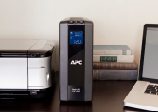
- HOME UPS/ INVERTER
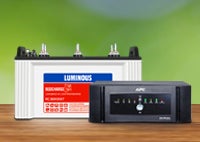
- UPS - LB Series

- WISER HOMES
- SWITCHES & SOCKETS
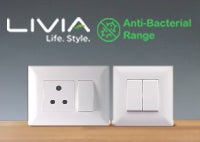
- Mobiya Solar Lamp

- ELECTRICAL PROTECTION & CONTROL
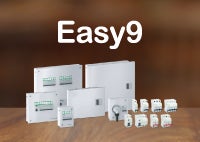
- Easypact TVS
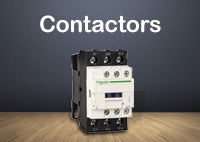
- MPCB & THERMAL OVERLOAD RELAY
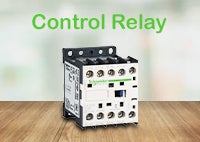
- CONTROL RELAY
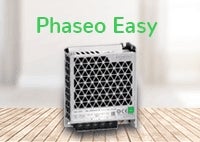
- Easypact CVS
- Easypact EZC
- ComPact NSX
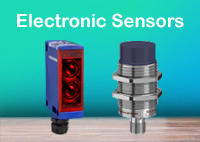
- DIGITAL METERS
- Basic Meter Range

- Easylogic PFC+ Capacitors

- Power Factor correction
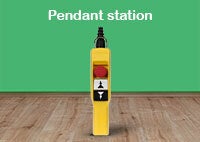
- VARIABLE SPEED DRIVES & SOFT STARTERS
- POWER SUPPLY
- Phaseo Series
- Modicon Series
- ELECTROMECHANICAL RELAY
- PUSH BUTTON, SWITCHES, PILOT LIGHTS
- Harmony XA2E
- Harmony XB5
- Harmony XB4
- Harmony XB7
- Harmony XVB
- Harmony XAC
- Harmony XALD,XALK
- SIGNALING UNITS
- Harmony XVG
- LIMIT AND PRESSURE SWITCHES
- Automation Relay
- Servo Drives and Servo Motors
- PLC,PAC Controllers
- Control Station
- Switch Disconnector
- ComPact INS
- Tesys Vario
- Residual Current Relays
- PFC Controller
- Motor Starter
- Electronic Overcurrent Relay
- Motor Controller
- Foot Switches
- Biometric Switches
- HVAC Field Services
- Sensors- Living Spaces
- Sensors-Plant Room
- Valves and Actuators
- Design your space online
- Get your quotation online
- Experience Zone Video
- MERCHANDISE STORE
- Brand Connect

- Wiser - Smart Homes Package
- Fab Homes Bundle
- Book a free Consultation
- Educational Equipment Services
- SPECIAL DEALS
- TOP SELLERS
- DAZZLING DIWALI
- SAFETY FIRST
- Best Discount

- Customer Care Center 1800 103 0011 or 1800 419 4272
- [email protected]
- My Registration-ER
- My Registration-IR
- Support/Enquiry
- Registration Form

- Electrician Locator
- Retailer Locator
- Store / Shop Locator
- After Sales Services
- Installation support
- Easy Returns
- After Sales Service
- Customer Care Center 1800434231 [email protected] Please call back
- HELLO, SIGN IN
Reasons You Are Experiencing Frequent MCB Trips
Become a Partner with Schneider Electric Architect, Contractor, Reseller SIGN UP
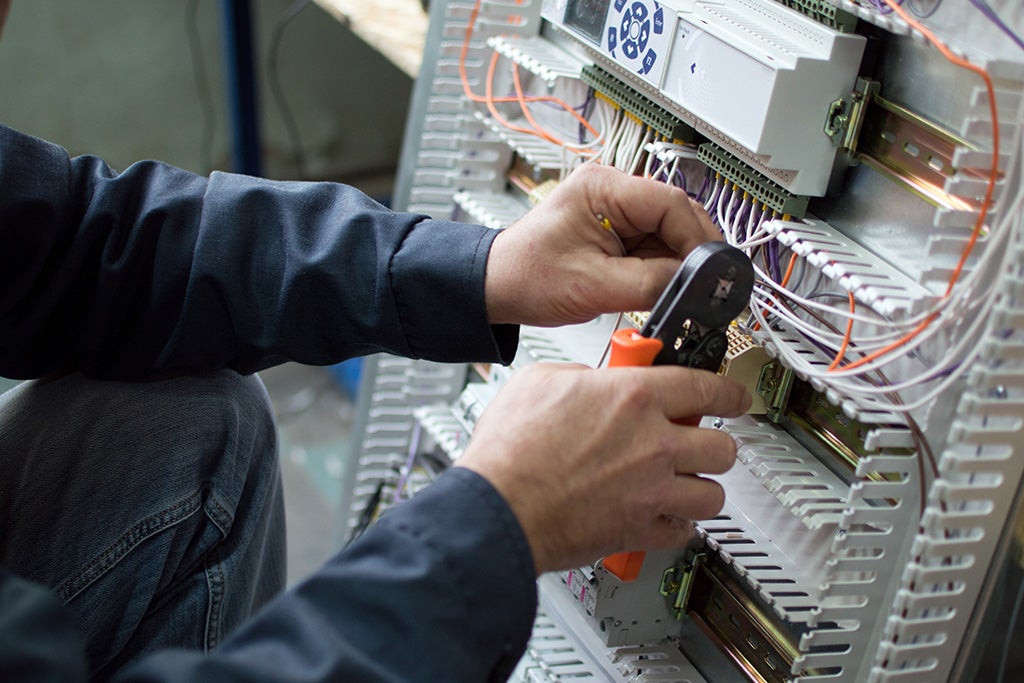
MCBs or Miniature Circuit Breakers are devices that help break the overload of power supply and also help avoid short circuits. It’s very likely that at some point, you may have experienced a short circuit where your MCB may have ‘tripped’. Usually, this rare occurrence can be easily rectified by restoring the MCB.
Sometimes though you may notice that these ‘trips’ are becoming more frequent. This can be frustrating because you may have to check what has gone wrong each time. If your MCB board is in the basement, then the frequent trips can feel irritating. Frustration or not, frequent MCB trips are an alarming sign and should be checked.
While MCBs usually have high capacities to handle surges, frequent trips can even impact their performance. If you are experiencing frequent MCB trips, then it's important to understand what the root cause of it is.
How Do I Know if a Circuit Breaker Has Tripped?
A circuit breaker is an important safety device that automatically shuts off electrical power to a circuit if it detects an overload or short circuit. If a circuit breaker has tripped, it will need to be reset before power can be restored to the circuit. Here are some steps to follow to determine if a circuit breaker has tripped:
- Check for power: First, check to see if there is power in the affected area. If the lights or other devices connected to the circuit are not working, it may indicate that the circuit breaker has tripped.
- Check the breaker panel: Locate the breaker panel in your home or building and look for the breaker that corresponds to the affected circuit. The breaker will be in the "off" position if it has tripped.
- Reset the breaker: To reset the circuit breaker, firmly push the breaker switch to the "off" position, then back to the "on" position. You may hear a clicking sound when the breaker is reset.
- Check for power again: After resetting the breaker, check to see if power has been restored to the affected area. If the circuit breaker trips again immediately after being reset, it may indicate a larger problem and a qualified electrician should be called to inspect the circuit.
If you are unable to reset the breaker or if it keeps tripping repeatedly, it may be an indication of a more significant issue, such as a short circuit or electrical overload. In such cases, it is important to consult with a qualified electrician to diagnose and repair the problem safely.
Checking for power, locating the breaker panel, resetting the breaker, and checking for power again are the steps to follow when determining if a circuit breaker has tripped. It is important to always prioritize safety when working with electricity and to seek professional assistance if needed.
Here we are listing some of the most common reasons for frequent MCB trips.
1) circuit overloads.
This is the most common reason for MCB trips. Circuit boards supply electricity to different circuits to distribute power. When an electrical appliance pulls more power from a circuit than its capacity, an overload occurs. So, if you are experiencing frequent trips, it's advisable to observe how many heavy power-consuming devices are being used at the same time.
2) Short circuits
These are far more hazardous than circuit overloads. While there is a complex system that triggers a short circuit, we will simplify it. A short circuit often occurs when a ‘neutral wire’ comes in contact with a ‘hot wire. This leads to a surge of current being passed through a circuit – usually, this current is far more than the circuit can handle. This leads to a short circuit usually characterized by a burning smell.
MCBs are very effective in breaking the current supply in case of a short circuit. Even then, you should check for loose connections or faulty wirings to avoid any disasters.
3) Ground Fault
This is like a short circuit. In a ground fault, a hot wire touches a ground wire leading to a surge in the power supply. When this happens, the circuit in MCB will automatically trip to avoid fires. You can identify a ground fault surge by noticing a ‘charring’ or black discoloration around appliance sockets. This is a major hazard, and professionals should be brought in to check ground faults.
Read more: - Benefits Of Installing MCBs At Homes
How Do You Reset a Tripped Circuit Breaker?
A tripped circuit breaker can be easily reset by following these simple steps:
- Locate the circuit breaker panel: Circuit breaker panels are usually located in the basement, utility room, or garage. Once you have located the panel, open the door to reveal the breakers.
- Identify the tripped breaker: Look for the breaker that has moved to the "off" position or is in a position that is different from the rest.
- Turn off the tripped breaker: Move the tripped breaker to the "off" position by pushing it firmly to the "off" position.
- Reset the tripped breaker: Move the breaker to the "on" position by pushing it firmly to the "on" position. You may hear a clicking sound when the breaker is reset.
- Test the circuit: After resetting the tripped breaker, test the circuit to see if power has been restored. Turn on the light or plug in the device that wasn't working to check if it is now functioning.
- Repeat if necessary: If the circuit breaker trips again immediately after being reset, it may indicate a larger problem and you should not reset it again. Instead, call a licensed electrician to diagnose and repair the problem.
It's important to note that if you reset the circuit breaker and it trips again repeatedly, there may be an underlying issue with the circuit or wiring that requires further investigation by a licensed electrician.
Resetting a tripped circuit breaker is a simple process that involves locating the tripped breaker, turning it off, and then resetting it. However, if the breaker trips repeatedly, it is important to seek professional help to avoid any electrical hazards.
How Can I Tell if a Circuit Breaker Has Gone Bad?
Circuit breakers are designed to trip when there is an overload or short circuit in the electrical system. However, like any other electrical component, circuit breakers can also fail or go bad over time. Here are some signs that may indicate a circuit breaker has gone bad:
- Circuit breaker trips frequently: If a circuit breaker trips frequently or for no apparent reason, it may be a sign that it has gone bad.
- A circuit breaker does not trip: On the other hand, if a circuit breaker does not trip when there is an overload or short circuit, it may indicate that the circuit breaker has failed to perform its intended function.
- Burnt or discolored marks: If you see any burnt or discolored marks on the circuit breaker or the surrounding panel, it may indicate that the circuit breaker has overheated or failed.
- Hot to the touch: If a circuit breaker feels hot to the touch, it may indicate that it is not functioning properly and needs to be replaced.
- Unusual noises: If a circuit breaker makes unusual noises such as buzzing or humming, it may indicate that it is faulty.
If you suspect that a circuit breaker has gone bad, it is important to consult with a licensed electrician to diagnose the issue and replace the circuit breaker if necessary. Attempting to replace or repair a circuit breaker on your own can be dangerous and should be avoided. Always prioritize safety when working with electricity and seek professional assistance if needed.
How to avoid MCBs tripping
Miniature Circuit Breakers (MCBs) are designed to trip and cut off the power supply when there is an overload or short circuit in the electrical circuit. While this is an important safety feature, frequent tripping can be frustrating and disruptive. Here are some tips to help you avoid MCBs tripping:
- Balance the load: An unbalanced load can cause the MCB to trip. To avoid this, make sure that the load is evenly distributed across the circuit. For example, avoid plugging in multiple high-power devices on the same circuit.
- Use the correct MCB: Make sure that you are using the correct MCB for the circuit. Using an MCB with a lower rating than required can cause it to trip frequently. Check the ampere rating of the MCB before installation.
- Avoid overloading: Avoid overloading the circuit with too many electrical appliances or devices. Unplugging unused devices can help to reduce the load on the circuit.
- Check for loose connections: Loose connections can cause an increase in resistance and heat in the circuit, which can trip the MCB. Check for any loose connections and tighten them if necessary.
- Replace faulty appliances: Faulty appliances can cause an increase in current flow, which can trip the MCB. Replace any faulty appliances or have them repaired by a qualified electrician.
- Install a surge protector: A surge protector can protect your electrical devices from power surges and spikes, which can cause the MCB to trip.
- Upgrade the electrical system: If you frequently experience MCB tripping, it may be a sign that your electrical system is outdated or inadequate. Consider upgrading the electrical system to meet your current needs.
Read Also: MCB (Miniature Circuit Breakers) Guide - Types, Sizes, And Uses
It's important to note that if the MCB continues to trip frequently despite these measures, it may indicate an underlying problem that requires the attention of a licensed electrician. Do not attempt to work on electrical systems on your own as it can be dangerous. Always prioritize safety when working with electricity and seek professional assistance if needed.
While you take all these precautions, ensure that you invest in good quality and durable MCB. You can check for MCB online with Schneider Electric. Our wide range of circuit breakers comes with an MCB price list that will help accelerate your decision of buying the right MCB for your home.
Schneider Electric is a trusted brand that designs high-quality MCBs and offers an electric MCB price list that is cost-effective and fits all budgets.
- Covid 19 (ID: 3)
- Home Automation (ID: 4)
- Switches & Sockets (ID: 5)
- MCB (ID: 6)
- MCCB (ID: 7)
- Stabilizers (ID: 8)
- Home UPS/Inverter (ID: 9)
Monthly Archive
- April , 2024 (6)
- March , 2024 (6)
- February , 2024 (6)
- January , 2024 (12)
- November , 2023 (6)
Types of Tripping Protection in MCCB
In this post, we will see the various types of tripping protection features available in an MCCB.
Circuit breakers are an essential part of an electrical circuit. It is a device that is used as a protective switch for passing electrical current with tripping conditions checked.
When it detects a trip condition, the circuit breaker opens its contact and isolates the input and output voltage from contacting each other.
Many types of circuit breakers are used in a circuit; but in this post, we will focus on one of the most used ones – MCCB ( Moulded Case Circuit Breaker) .
Table of Contents
MCCB Tripping Protection
Now, here, we will see the many tripping functions that are available in MCCB. Basically, the idea is to understand the various settings through which an MCCB can trip the circuit.
This is one of the main advantages of MCCB over other circuit breakers; because you have many options to protect the whole electrical circuit by manipulating the settings according to you.
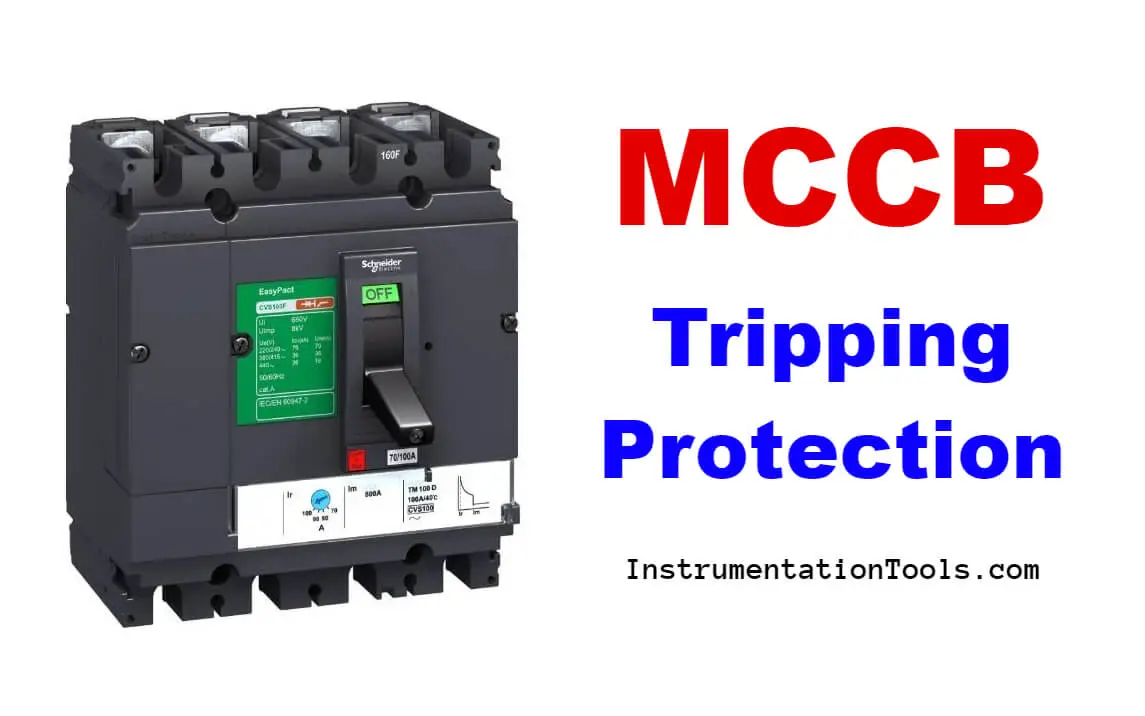
Let us have a look at each one of them.
Long Time Delay
As the name defines, the long time delay is the setting that shows how long a circuit breaker can carry the over current before tripping the circuit.
It defines the maximum tolerable capacity of the MCCB to carry a huge amount of over current that is potentially dangerous for the circuit if carried for a longer time.
Many electrical loads have a high amount of inrush current too when it is started. If the circuit is not allowed to pass this current for some period of time and it trips immediately, then it will never run in the system.
So, it is essential to provide some time for the load to carry this current; but up to a permissible limit. This limit is a long time delay.
The maximum allowable over current rating available as of now is up to 6 times the rated current. Time is settable normally from 2 to 30 seconds.
Short Time Pick Up and Delay
As the name defines, the short time delay is the setting that shows how long a circuit breaker can carry the over current before tripping the circuit. The working is the same as long time delay ; it is just shorter than long time delay.
A short time delay allows a more amount of over current to pass through the circuit breaker. Time is settable normally from 0.05 to 0.5 seconds.
Short-time pickup is the current set in the circuit breaker which defines the maximum allowable over current.
Typically, it is up to 10 times the rated current.
Continuous Amps
With this setting, you can change the rated current of the circuit breaker.
Typically, the setting is adjusted from 20 to 100%. This means, suppose you set the rating to 60%; and the rated ampere is 1000A.
So, the circuit breaker can carry 600A of current properly without tripping. If it exceeds 600A, then it will trip.
Ground Fault Pick-up and Delay
There are many systems where grounding is not proper and if such high impedance currents are not detected, then it can damage the equipment.
So, this setting allows the circuit breaker to limit the ground fault current up to a limit for a certain period of time. If the time is exceeded, then the circuit breaker will trip.
Normally, the time is divided into three parts – 0.1 seconds, 0.2 seconds, and 0.4 seconds.
The pickup is normally set from 20 to 70% of breaker rating.
Instantaneous Pick-up
As the name defines, instantaneous pick up is the setting that shows how high a circuit breaker can carry the over current before immediately tripping the circuit. There is no time delay in this.
As soon as the current exceeds the limit, the circuit breaker trips instantaneously. If this setting is set even lower than short time pick up and the current exceeds the instantaneous pickup limit, then it will override the short time delay and trip the circuit immediately.
In this way, we discussed various types of tripping protections that are available in an MCCB.
If you liked this article, then please subscribe to our YouTube Channel for Instrumentation, Electrical, PLC, and SCADA video tutorials.
You can also follow us on Facebook and Twitter to receive daily updates.
- Earth Leakage Circuit Breaker
- Corona Discharge in Power Lines
- Star Delta Starter Circuit Diagrams
- Control Two Motors after Time Delay
- Thermal Protection Relay for Motors
Recommended Articles
Why is the Humming Sound Produced in Transformer?
How to Read and Understand an Electrical Single Line Diagram?
Electrical Cabinet Air Conditioner – Enclosure Cooling, Maintenance
Difference Between Trunking and Conduit
Difference Between Power Cable and Instrument Cable
Most Asked Questions on Servo Motor (Answers)
Working Principle of Overload Relay
How to Operate a Group of Induction Motors using PLC Logic?
Testing of Thermal Protection Relay for Motors
Circuit Breaker Working Principle Animation
Leave a Comment Cancel reply
More articles.
Root Cause Analysis – Burst Transformers and 11 kV Input Breakers
What is a Substation? Purpose of an Electrical Substation
Difference Between MPCB and MCCB
Proper Sizing of Conductors
Variable Motor Speed Control
Difference between Current Transformer and Potential Transformer
Difference Between Earth and Neutral
Basics of Electrical Transformer
What is insulation? How to Choose the Insulation Material?
Totally Enclosed Fan Cooled (TEFC) Motors Rampant Winding Burnouts

ELECTRICAL CLASSROOM
A complete Electrical Engineering portal
MCB Trip Curves – B, C, D, K, and Z trip curves
MCB (Miniature circuit breaker) is a re-settable device designed to protect a circuit from short circuits and overcurrents. The trip curve of an MCB (B, C, D, K, and Z curves) tells us about the trip current rating of Miniature Circuit breakers. The trip current rating is the minimum current at which the MCB will trip instantaneously. It is required that the trip current must persist for 0.1s.
Class B trip curve
Class c trip curve, class d trip curve, class k trip curve, class z trip curve, class a trip curve, importance of mcb trip curve types, trip curves for other circuit breakers.
The MCB trip curves, also known as I-t tripping characteristic consist of two sections viz, overload section and short circuit section. Overload section describes the trip time required for various levels of overload currents and the short circuit section describes the instantaneous trip current level of MCB.
Read More: Miniature Circuit Breaker (MCB) – Principle of operation
The MCB with class B trip characteristics trips instantaneously when the current flowing through it reaches between 3 to 5 times the rated current. These MCBs are suitable for cable protection.
MCB with class C trip characteristics trips instantaneously when the current flowing through it reaches between 5 to 10 times the rated current. Suitable Domestic and residential applications and electromagnetic starting loads with medium starting currents.
MCB with class D trip characteristics trips instantaneously when the current flowing through it reaches between Above 10(excluding 10) to 20 times the rated current. Suitable for inductive and motor loads with high starting currents.
MCB with class K trip characteristics trips instantaneously when the current flowing through it reaches between 8 to 12 times the rated current. Suitable for inductive and motor loads with high inrush currents.
MCB with class Z trip characteristics trips instantaneously when the current flowing through it reaches between 2 to 3 times the rated current. These types of MCBs are highly sensitive to short circuits and are used for the protection of highly sensitive devices such as semiconductor devices.
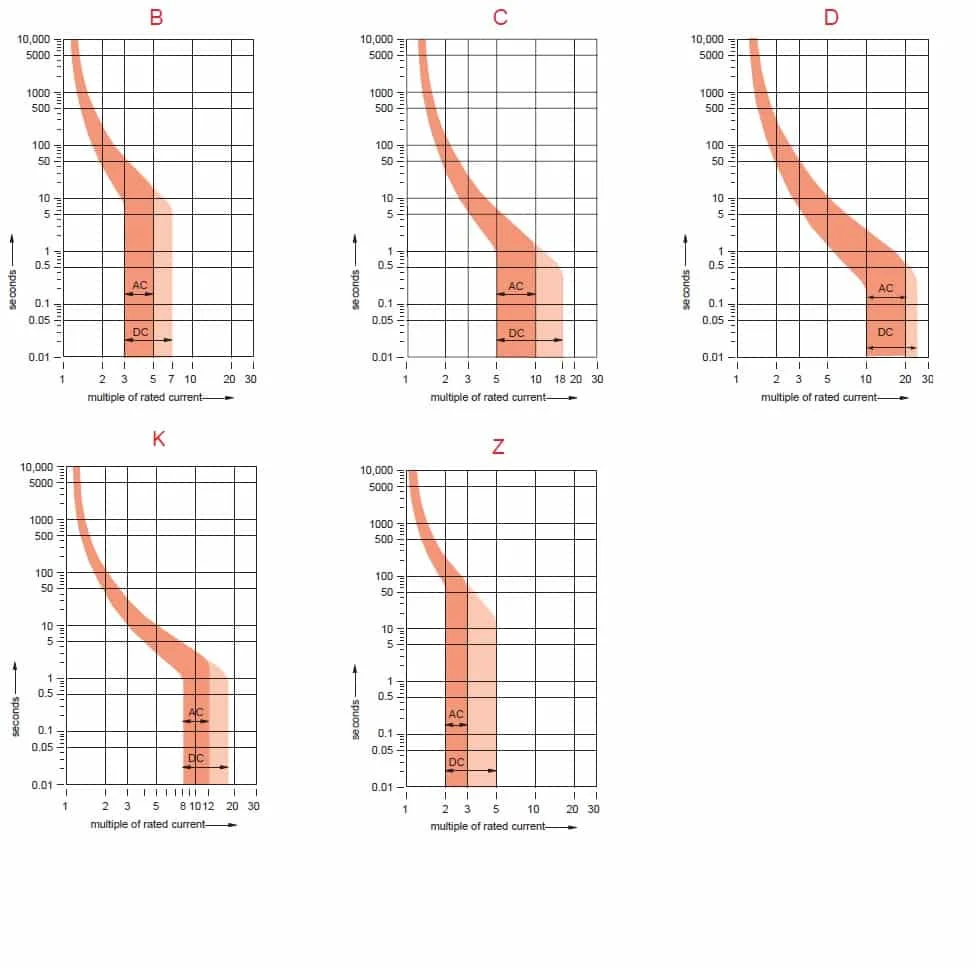
MCB with class A trip characteristics trips instantaneously when the current flowing through it reaches between 2 to 3 times the rated current. Like Class Z MCBs, these are also highly sensitive to short circuits and are used for the protection of semiconductor devices.
MCBs with trip curve class B and trip curve class C is the most commonly used ones. MCBs with Class C trip curves can be found in the lighting power distribution boards in residential and commercial buildings. It trips as soon as the current rises between 5 to 10 times its rated current. Class B MCBs are used in the protection of electronic devices such as PLC, DC power supplies, etc. in control panels. It trips as soon as the current rises between 3 to 5 times its rated current.
In some applications, frequent current peaks occur for a very short period (100ms to 2s). For such applications, class Z-type MCBs shall be used. Class Z-type MCBs are used in circuits with semiconductor devices.
It is important to choose an appropriate MCB current rating and trip curve in order to safeguard the circuit from damage during faults. Hence it is necessary to calculate the short circuit current and inrush current before choosing an appropriate MCB rating. If the chosen MCB rating is much higher than required, then it may not trip in the event of a fault. Similarly, if the MCB is underrated, then it may cause nuisance trips, for example even the starting currents or inrush currents may trip the MCB.
External selection tool: https://new.abb.com/low-voltage/solutions/selectivity/tools-support/curves
All circuit breakers, such as MCCB, ACB, VCB, etc have their own trip characteristics. The only thing is that may not follow the categorization as that of MCB. Also, the circuit breaker curve types are not the same for all types of circuit breakers. It varies from one circuit breaker type to the other and depends on many design factors.
Learn more about MCB:
- What is an MCB?
- Miniature Circuit Breaker (MCB) – Principle of operation
- What is kA rating of MCB and MCCB?
Related Articles: 1. Difference between MCB and MCCB 2. Difference between contactors and relays 3. Difference between Soft Starters and VFDs 4. Difference between MCCB and RCCB 5. Difference between MCB and RCBO 6. Difference between RCCB and RCBO 7. Difference between MPCB and MCCB
27 thoughts on “MCB Trip Curves – B, C, D, K, and Z trip curves”
Very good explanation. I understood the concept. Thank you.
Thank you, Mr. Sanket. Kindly browse through our articles. Please subscribe or follow us on twitter/facebook for instant updates.
Thankhs google team good explace thanks again
Very good mcb make , what Amps load trip make
Very good. Nice explain.. Good job
Explanation is good but your second paragraph doesn’t match the charts. It looks like it is the B-curve that trips between 3-5 times its rated current, and C-curve that trips between 5-10 times its rated current.
Very good, thanks
very good …..thanks
Thanks very much
Very good explanation
Is this curves is applicable to Rccb ?
No. These curves are applicable for mcbs only.
Thanks for your information
The information about mcb is very useful and helpful for a technician, many many thanks for sharing your information.
Great information, I got to know a few more details out of what I wanted to know.
Which type is better choice for UPS protection?
The explanations are very good but in the video is a mistake at minute 0.38. The short circuit sections with the overload section are reversed.
Good for selection of MCB’s
On the c type Mcb on the time curves at a short circuit fault current at 220amp it shows dis connection at 6/7seconds are you saying that disconnection will be instant at this current or 6/7 seconds.
I use B-curve in my home when short circuit occured in the appliace MCB tripped but my appliance burned. My appliance lead wires were shorted by a metal piece was lying on it.I thought MCB could have protected but not. And I also headed big noise of it.
Sorry to hear that. This could be because the MCB was oversized: Much higher than the rated current of the appliance or the MCB could be faulty. We suggest you replace it with a new one. Make sure that you are choosing the right one.
Thanks for sharing such an informative article about MCB.
sir Type C is used for average current load. Type B and C are the most commonly used in DBs. Tripping of MCB Type C is 5-10 times higher than normal. eg: if a 6A mcb put in acircuit , the rated current is 6 A , then how ever the type c mcb with stand 5 to 10 times higherr than normal .
hello, what about the CL curve mcb, because in my home installation I used the cl4 code on the mcb
Perhaps you are referring to product name of the MCB and not its trip curve.
The information is quite educative. Thank you so much
Leave a Comment Cancel reply


Why Does Your MCB Trip?

Table of Content
1. What is an MCB? 2. Reasons Why MCBs trip 3. Miniature Circuit Breaker (MCB) 4. MCBs arrangement inside a DB 5. How to avoid MCBs tripping

What is an MCB?
MCBs or Miniature Circuit Breakers are protective electromagnetic devices that act as a switch in a circuit. They automatically open the circuit whenever they sense the current passing over the circuit has crossed a certain limit or value. The device can also be used as a normal on and off switch manually.
MCBs are also known as time delay tripping devices which trip and shut down the system whenever there is an overcurrent flowing for a longer period of time and there is a danger to the entire circuit. However, in the case of short-circuits, these devices can trip and stop the power supply within 2.5 milliseconds.
In an electrical system ‘Fault’ is the condition which arises due to the malfunctioning of some component or wrong electrical practice. A fault may lead to a very dangerous situation such as explosion & fire if not cleared timely, not only this, the amount of time for which fault remains in the system, it continuously deteriorates the system health causing high energy losses resulting in increased thermal stress upon the system. Faults are hazardous to the system & require to be cleared at the earliest thus, there is a need for such a device which not only is capable of clearing the fault but also has a lower opening time in order to save the let-through energy & minimize the thermal stress.
Reasons why MCBs trip
Generally, 2 kinds of fault which disturb the system often are:
- Overload: An overload is a fault condition which arises in a system when a circuit draws a higher current than its rating. For example from a 6A socket if we draw 10A current the condition is said to be overload.
- Short Circuit: This is a condition in which an extremely low resistance path is created due to an accidental or intentional connection between 2 or more conductors which leads to the sudden increase of current to its peak value and voltage getting minimized to an extremely lower magnitude.
Miniature Circuit Breaker (MCB)
MCB or Miniature Circuit Breaker is a protection device which offers protection against overload & short circuit. It includes a bimetal & a solenoid coil which trips the MCB in case of Overload & Short Circuit respectively. Complying with IEC 60898-1, MCB is used for the lower ratings from 0.5~125A.
MCBs arrangement inside a DB
According to the type of curve/applications the mcb is of 3 types:.
- B Curve: This type of MCB has a lower short circuit trip zone and can be used for Resistive/ Lighting loads, for example, lights, heaters, etc.
- C Curve: These MCBs have a higher short circuit tripping zone and can be useful for the inductive type/motor loads, for ex: AC, Refrigerator etc.
- D Curve: These MCBs have a very high short circuit tripping zone and are generally used for the loads which draw a very high starting current such as Sodium Lamps.
How to avoid MCBs tripping
- Avoid using multi-plugs and extension cords.
- Replace all broken & damaged wires of electrical devices and appliances.
- Unplug all the electrical devices & appliances when not in use.
- Must keep a count of the number of devices that are in use in Hot and Cold Weather.
Thus, they are security devices that not only save electrical appliances or gadgets of your house but also the wiring and the entire house. So, whenever an MCB trips there is a serious reason behind it and should be dealt cautiously.
You can check our entire range of MCBs with their features here
Why it is Important to have an RCCB in a Distribution Board
Benefits of industrial plugs and sockets.

C&S Celebrates International Women’s Day 2024

Annual Day Celebrations: Celebrating Success and Innovation!

C&S Electric celebrates the launch of ” Meri Pehchaan” authored by Ekta Raizada.

Corporate Social Responsibility
What’s the Working Principle of Auto Recloser Circuit Breaker?
- December 25, 2023
These kinds of MCBs and RCCBs with automatic reclosing functions have many applications, including meter boxes, solar circuit management, photovoltaic solar control boxes, smart power, smart home systems, and new energy vehicle charging piles.
1. Working principle of automatic reclosing
The working rules of automatic reclosing are equally simple: when a fault is detected, the circuit breaker trips. The controller then waits for a predetermined time before closing the circuit breaker again. If everything is normal, this is the end of the whole process, but if the fault persists, the circuit breaker trips again. After an additional delay, the controller recloses it again and checks again whether the fault persists. If the spot still exists after the second closing, the circuit breaker trips again.
2. Automatic circuit reclosing function
- Optional circuit breaker/leakage protection switch, MCB / RCCB will automatically close when accidental tripping, without manual closing, reducing manual maintenance costs, troubleshooting in time, and improving efficiency.
- Built-in multiple reclosing, continuous closing failure can be alarmed by auxiliary contacts within a few minutes.
- With manual/automatic selection switch.
- With mechanical/electronic double lock function.
- The shaft transmission mode is more stable and reliable.
- Can be matched with other accessories.
- The working status is displayed by LED.
3.Wiring diagram of automatic reclosing circuit
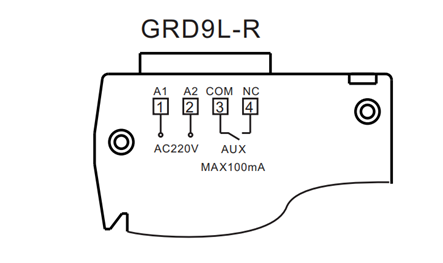
4. Installation of automatic reclosing circuit breaker
1)If auto rec closes and cooperates with RCCB:
First, put the linkage into the handle of the RCCB. Then close the upper and lower buckles to ensure that the connection is tight.
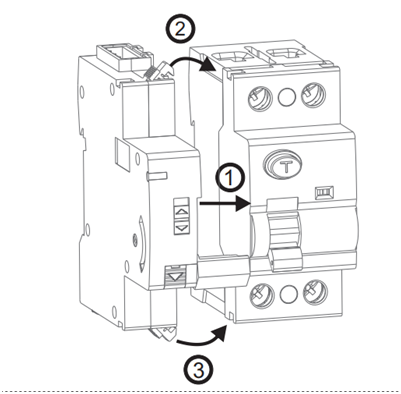
2. If auto-reclosing is matched with MCB:
First, put the linkage device into the handle of the MCB. Then align the small cylinder with the corresponding hole. Finally, close the upper and lower buckles to ensure a tight connection
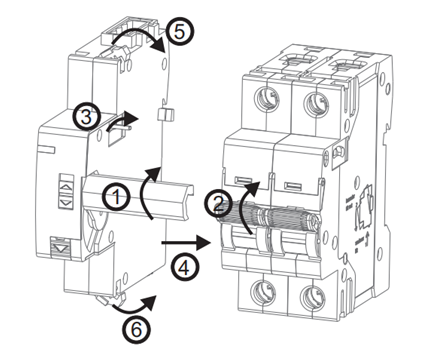
3.If automatic reclosing is matched with MCB/RCCB and accessories:
First, install the MCB/RCCB on the rail. Then install the automatic reclosing device (ARD). Finally, install accessories next to the ARD.
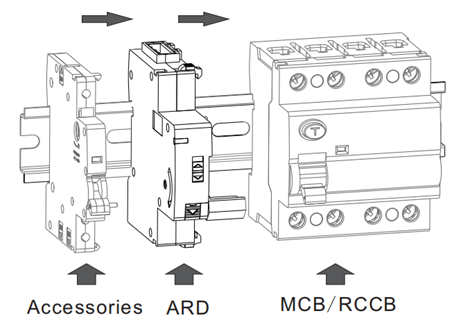
5.Automatic reclosing operation
In AUTO mode, turn on the auto-reclosing function:
In MANU mode, turn off the auto-reclosing function.
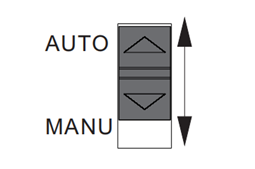
MCB/RCCB can only be turned on and off manually:
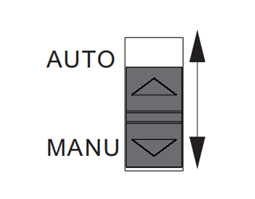
When power on, the green indicator light flashes for 2 seconds, wait for the power supply to stabilize. When MCB / RCCB fails to trip, the green light will be on and the red light will be on.
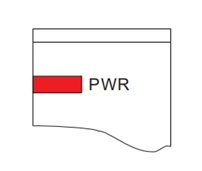
Note that the red color will flash when the auto-reclosing is delayed. After a delay, it will automatically turn on and the green light will be on.
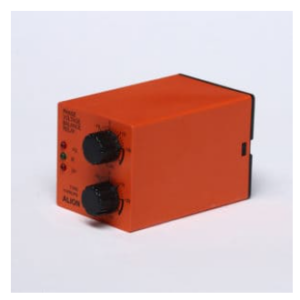
What Does a Time Delay Relay Do?
A time delay relay is an electromechanical device that controls
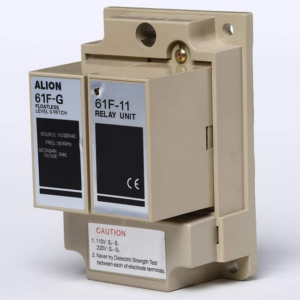
How Are Time Delay Relays Made?
Time delay relays are typically made using a combination of
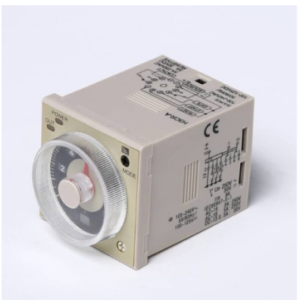
What You Need to Know About a Time Delay Relay
Time delay relays are tools that help create pauses in
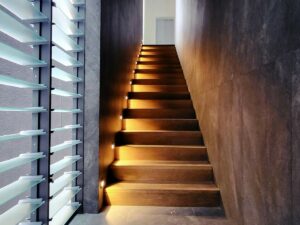
A Basic Introduction to a Staircase Time Switch
A staircase time switch is an electrical device designed to
Send Us A Message
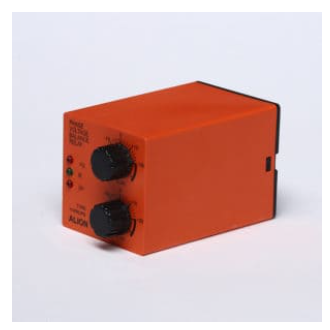
A time delay relay is an electromechanical device that controls …
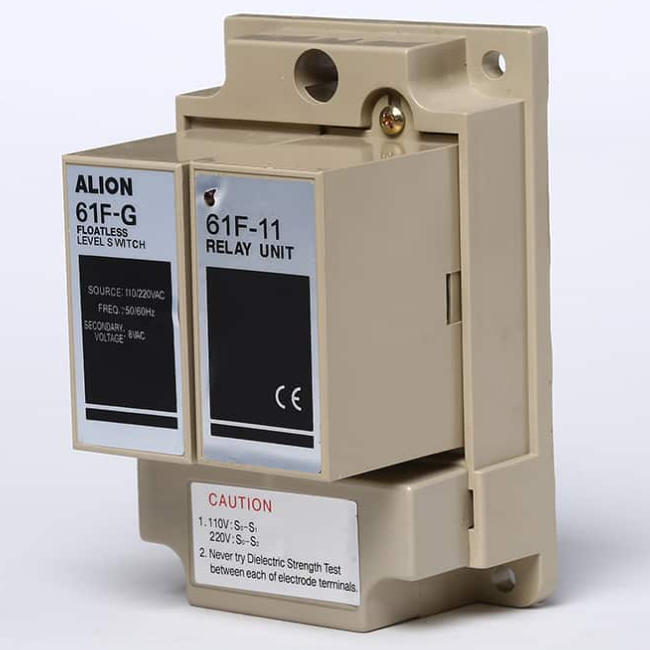
Time delay relays are typically made using a combination of …
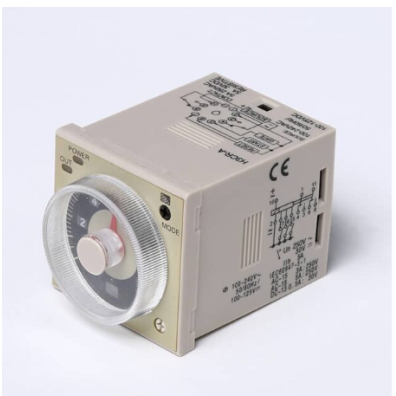
Time delay relays are tools that help create pauses in …
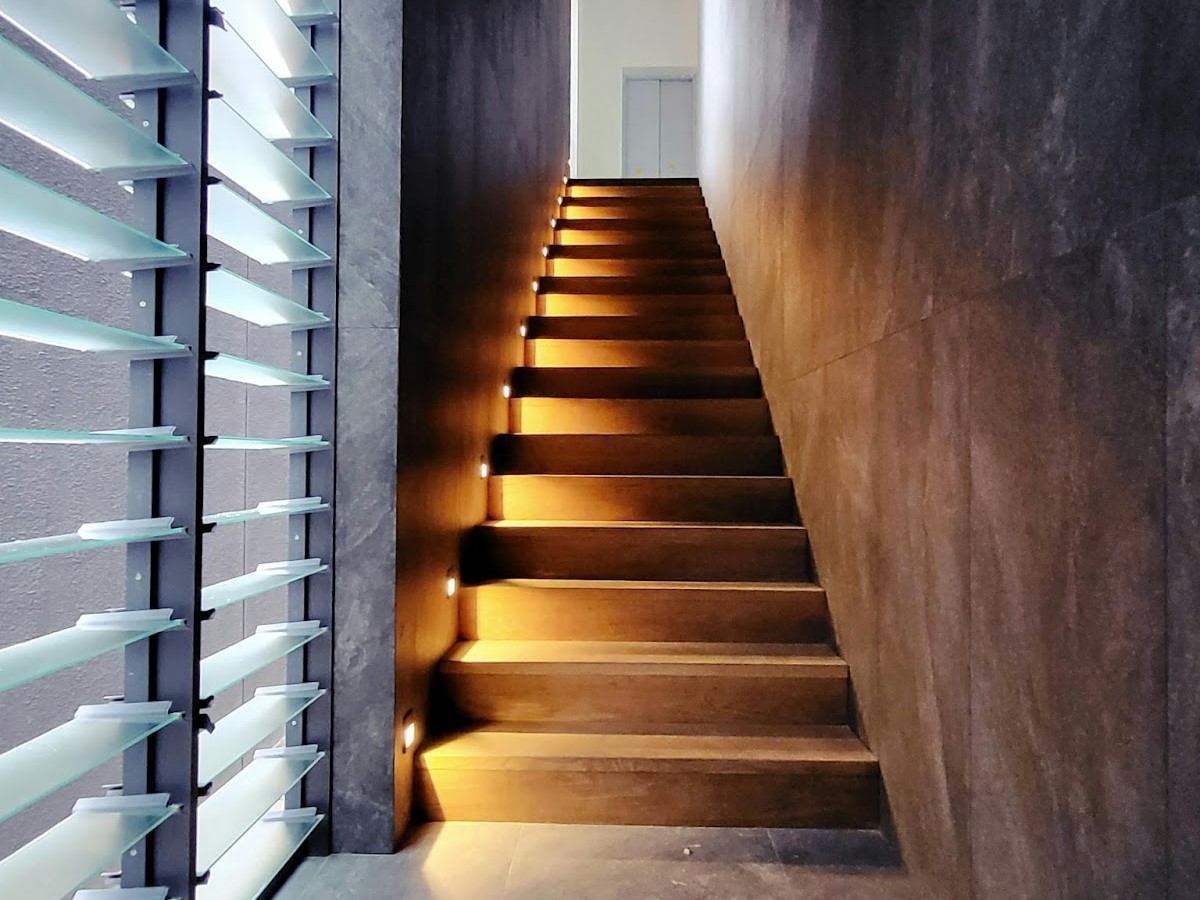
A staircase time switch is an electrical device designed to …

How to Test Timer Relay for Optimal Performance
Are you working with time relays in your industry? If …

How Does a Time Delay Relay Work?
What are time delay relays? How does a time delay …
Your inquiry will be replied in 24 hours

Understanding MCCB: The Fundamentals of Molded Case Circuit Breakers
As an experienced electrician, I often get asked about the differences between the various circuit protection devices used in electrical systems. In particular, there seems to be some confusion regarding molded case circuit breakers (MCCBs) and how they differ from the more commonly used miniature circuit breakers (MCBs). In this article, I will share my practical knowledge about MCCBs, their purpose, construction, ratings, and applications based on my years of hands-on experience.
What Is MCCB?
Moulded-case circuit-breaker (MCCB) is a circuit-breaker having a supporting housing of moulded insulating material forming an integral part of the circuit-breaker [source: IEC 60947-2-2019].
Based on my experience, the key features of MCCBs are:
- Compact design for space savings
- Thermal-magnetic trip unit for overcurrent protection
- Manual and automatic reset options available
- Test button to manually trip the breaker
- Adjustable trip settings on some models
- High interrupting capacity for protecting downstream equipment
MCCBs are commonly used in power distribution systems, switchboards, panelboards, and machine tools. Compared to fuses, they can be easily reset after tripping without having to replace fuses. This makes them more convenient and economical for overcurrent protection.

MCCB Working Principle
MCCBs provide overcurrent protection by automatically tripping open when excess current flows through them. This stops the flow of current and protects the electrical circuit and connected equipment.
Based on my research, the trip unit of an MCCB contains both a thermal element and an electromagnetic coil. Here’s how they work:
- Thermal element – Heats up and bends when overcurrent flows through the breaker over time. At the trip point, it releases the trip mechanism to open the MCCB contacts. Provides protection against overloads.
- Electromagnetic coil – Responds instantly to a surge of overcurrent by generating a magnetic force to trip open the MCCB. Provides protection against short circuits.
The trip settings on adjustable MCCBs are based on the tripping characteristics of these two elements. The breaker will trip when either the thermal or magnetic element reaches its trip point.
Molded Case Circuit Breaker Ratings
A molded case circuit breaker shall be rated in amperes, volts, and frequency. A MCCB shall be permitted to be rated for ac, dc, or both.
A MCCB shall have one or more of the following voltage ratings (based on UL 489-2019-04):
- a) DC: 24, 48, 60, 65, 80, 125, 125/250, 160, 200, 200/400, 250, 400, 500, 600, and 650 to 1500 Vdc, in 50 V increments.
- b) AC: 120, 127, 120/240, 208, 208Y/120, 240, 277, 347, 480Y/277, 480, 600Y/347, 600, 650, 690, and 700 to 1000 Vac in 50 volt increments. In addition, any wye-connected system voltage with the above mentioned values meets the intent of the requirement.
The interrupting rating of a circuit breaker, or a circuit breaker frame with an interchangeable trip unit shall be the value as prescribed in Table 1, ″common″ for 2- and 3-pole, or one or more of the values shown in Table 2 that are higher.
The interrupting rating of a circuit breaker frame with an interchangeable trip unit shall be permitted to be less than that of the frame in which it is to be used.
If the interrupting ratings of all ampere ratings of a frame size of a non-interchangeable trip circuit breaker are not the same, all such interrupting ratings shall be permitted to be incorporated in an appropriate marking if each interrupting rating is clearly associated with the circuit breaker ampere rating or ratings to which it applies.
A current-limiting circuit breaker shall be rated additionally in terms of peak current and I 2 t let-through, together with the frequency related to the let-through values. The rating for peak current and I 2 t let-through shall be provided in terms of let-through versus prospective current curve, or in tabulated form. Such information shall be made available by the manufacturer and shall correlate with the particular circuit breaker. The let-through for at least the threshold current, interrupting rating current, and one intermediate point shall be indicated.
A current-limiting circuit breaker shall have a threshold current rating not more than the lesser of either:
- a) The value indicated in Table 3 corresponding to its interrupting-current rating, or
- b) 65 times the maximum current of the circuit breaker frame size.
A circuit breaker with equipment ground-fault protection shall have a ground-fault trip level rating.
What Is the Difference Between an MCCB and an MCB?
MCB stands for miniature circuit breaker, while MCCB is molded case circuit breaker. Based on my research, the key differences are:
In summary, MCCBs are preferable where adjustable protection, cascade schemes, or high interrupting capacity is required. MCBs are ideal for branch circuits due to lower cost, smaller size, and fixed protection curves. The choice depends on the specific requirements of the application.
MCCB Applications
What are the common applications of mccbs.
Based on my experience, some typical applications of molded case circuit breakers (MCCBs) include:
- Power distribution boards and panelboards.
- Motor branch circuit protection and control.
- Generator protection.
- Capacitor bank protection.
- Feeder circuit protection for large appliances.
- Branch circuit protection in commercial buildings.
- Protection of transformers, capacitors, and reactors.
- Backup protection with combination motor starters.
- Disconnect switches and safety switches.
MCCB is used to protect the low voltage distribution system.
MCCBs provide adjustable and reliable overcurrent protection for various downstream loads in commercial, industrial, and utility applications. Their high interrupting capacity also enables protection of larger equipment.
How Are MCCBs Used in Large Scale PV Systems?
For large photovoltaic (PV) arrays, MCCBs play a key role:
- String protection – MCCBs protect individual PV source circuits and prevent backfeeds.
- Array disconnect – MCCBs installed at the array provide a means of safe isolation.
- Overcurrent protection – Protection against short circuits in array wiring and connections.
- Rapid shutdown – MCCBs can be integrated with rapid shutdown control systems.
Properly sized MCCBs with DC rating provide adjustable protection, isolation, and rapid shutdown abilities in a compact footprint. This simplifies the design and installation of large scale PV systems.
What Are the Benefits of Using MCCBs in Industrial and Commercial settings?
Key benefits of using MCCBs in these settings:
- Adjustable protection selectively coordinated with downstream breakers.
- Higher interrupting ratings compared to fuses or MCBs.
- save panel space compared to individual thermal-magnetic breakers.
- Allow equipment isolation during maintenance.
- No fuse replacement needed compared to fusible switches.
- Features like zone interlocking, alarms, or communication.
- Finger-safe construction compared to open knife blade devices.
In summary, MCCBs provide adjustable protection, scalable interrupting capacity, and advanced features in an extremely compact footprint. These advantages make MCCBs an indispensable choice for industrial and commercial power distribution applications.
- IEC 60947-2-2019
- UL 489-2019-04
Join Our Telegram Channel Now!
Never miss out on the latest updates, exclusive content, and special offers.
About The Author
Dmitry Makarov


Types of Tripping Mechanism in MCCB
What is Moulded Case Circuit Breakers (MCCB)?
An electrical MCCB is a moulded case circuit breaker in its entire form. MCCBs are automatic electrical devices that guard against overload, short circuit, sudden overcurrent, and earth faults in electrical equipment. It is an improved MCB version (Miniature circuit breaker) . With a voltage range of 230V to 11kV, it comes in capacities ranging from 32 Amps to 1600 Amps.

The main benefit of an MCCB is that it can be customised to meet our needs by being installed with new features like remote closure, UV trip, etc. It is the most cost-effective and functionally superior alternative to an air circuit breaker. Additionally, you can change the time setting and the current setting in moulded case circuit breaker. Moulded case circuit breakers are electromechanical tools that can be used to manually or automatically open a circuit and protect it from overcurrent and short circuit. There are several different types of tripping mechanisms for MCCBs.
Tripping Mechanism of MCCB:
MCCBs use a variety of operating mechanisms.
- Thermal Trip
- Magnetic Trip
- Thermal- Magnetic Trip
- Electronic Trip
- Microprocessor Trip
Thermal Trip Mechanism:
- An MCCB’s thermal trip mechanism serves as a delay fuse.
- A circuit will be protected from a brief but persistent minor overload.
- A bimetal strip is linked in series with the circuit load in a thermal trip MCCB.
- When a typical current flows through a bimetallic strip, the temperature rises and the strip’s length increases, but the expansion rate is insufficient to allow the strip to bend, so the contacts stay closed.
- As the MCCB’s current rises above the load current. It sufficiently warms the bimetal, causing the bimetallic strip to bend according to the current level and open the close contact.
- The size of the bimetallic strip affects how much current is required to trip the MCCB.
- The current has an inverse relationship with the amount of time the bi-metal takes to bend and trip the circuit.
- It features properties of inverse time, which allow for a long delay under light overloads and a quick response under heavy overloads.
- The circuit will be protected from temperature increases by the thermal element as well.
- It is sensitive to the temperature outside.
- At 40 degrees Celsius, the MCCB must continually deliver its full rated current.
- Tripping Time will be influenced by the current. The faster the circuit breaker trips, the greater the overload
- To protect against overload, this tripping mechanism is used.

Magnetic Trip Mechanism:
- In a magnetic trip MCCB, the circuit load is connected in series with an electromagnet – an iron core with a wire coil surrounding it.
- The connections will remain closed because the electromagnet won’t have enough electromagnetic field to attract the trip bar to move.
- The strength of the electromagnet’s magnetic field grows as high current or short circuit current flows through the coil. When the circuit’s current reaches a certain level, the contacts open, the trip bar is dragged toward the electromagnet, and the current stops.
- The space between the trip bar and the magnetic element determines how much current is required to trip the MCCB.
- This gap (trip current) is fixed on some MCCB and changeable on others.
- When the predetermined current is present, a magnetic circuit breaker will trip immediately.
- used to protect against short circuits magnetic tripping mechanism is used.
Thermal – Magnetic Tripping Mechanism:
- The most popular type of circuit protection for over current and short circuits is the thermal-magnetic circuit breaker.
- It combines a magnetic circuit breaker and a thermal circuit breaker.
- It has two separate switching mechanisms: an electromagnet and a bimetal switch.
- Both the overload and the short circuit are detected using magnetic properties: magnetic flux and induction are utilised to detect the thermal property (Bimetal Strip lengthens when heated).
- Both the thermal element (a bimetallic strip) and the magnetic element (an electromagnet) are linked in series with the load in a thermal-magnetic circuit breaker.
- The normal load current heats a bimetallic element, which does not bend and does not attract the trip bar when placed under normal load.
- The bimetallic element will flex, push the trip bar, and release the latch if the temperature or current rises steadily. It will trip the circuit breaker.
- The magnetic element will draw the trip bar, release the latch, and trip the circuit breaker if the current rises abruptly or quickly enough.
- Both Thermal Trip and Magnetic Circuit Breaker (instantaneous-trip circuit breakers) provide an inverse time characteristic.
- 10 A to 1600 A for MCCB rating range and operating Time is 4 microseconds.
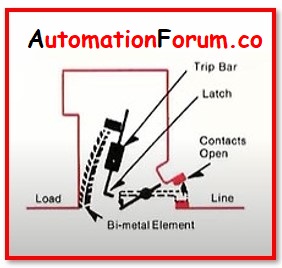
Electronic Trip Mechanism:
- Each conductor has a coil attached to it that measures the current flowing through it continually.
- When the settings’ values are exceeded, the circuit breaker is controlled to trip by an electronic module that processes this information.
- The overload trip action and short-circuit trip actions of breakers with electronic trip units are accomplished using current transformers and solid-state circuitry that monitors the current and starts tripping through a flux shunt trip when an overload or short circuit is present.
- MCCB Rating for the aforementioned mechanism: 20 A to 2500 A
- Running Time: 4 milliseconds
- Protection Scope: From 60% to 100% of the nominal current, the adjustable overload protection is available.
- It is possible to set a short circuit between 2 and 10 times the rated current.

Microprocessor Trip Mechanism:
- When a microprocessor-type tripping mechanism is released, the microprocessor executes sensing and tripping using a CT or current sensing resistor.
- Compared to TMD Release, it provides a much faster response.
- MCCB Rating applicable for the above tripping mechanism 20 A to 2500 A
- Operating Time for MCCB: 4 milliseconds.
- Protection Range is The adjustable overload protection ranges from 60% to 100% of the nominal current (0.6 to 1xIn)
- Short circuit settings ranging from 2 to 10 times the rated current are achievable.
- An advantage of the aforementioned trip mechanism As the trip history is stored in the internal memory, system diagnosis is possible.
- Additionally, trip current indication is available to help with site setup and fault type analysis.
- High repeatability and reliability.
- Provide other MCCB coordination and interlocking and high flexibility.
Control Valve Body Materials
What is a transformer and explain its working principle, related articles.

What is an electric tower? and its types

High resistance measurement using Megger

What is a Circuit Breaker?

What is the purpose of Wave Trapper in Power System?


IMAGES
VIDEO
COMMENTS
This functionality of the circuit breakers is known as 'Trip'. By doing so, circuit breakers are preventing fire or other damages caused to the circuit. Here are the major reasons behind your circuit breaker trip. In this article, we discuss domestic circuit breakers such as MCB, MCCB, and residual current devices (RCD, RCCB, RCBO).
Short-time pickup is adjustable from 1.5 to 10 times the trip unit ampere setting (Ir). For example, a 1000 ampere frame can be adjusted to trip anywhere from 1500 to 10,000 amps. The switch also has an "OFF" position to eliminate short-time pickup and short-time delay. Short-time pickup used for selective tripping.
Along with overloaded circuits and short circuits, a ground fault is another one of the main reasons for MCB tripping. A good quality MCB will trip at the slightest fault ensuring protection for the connected devices. This is the reason you must ensure that you use the best quality MCB like Acti 9 MCB for your home or commercial establishment.
MCBs are triggered by overcurrent, which is an electrical current exceeding a safe limit. Inside an MCB, a bimetallic strip heats and bends during an overload, causing the breaker to trip. This action interrupts the circuit, preventing potential hazards. MCBs use separate mechanisms to detect overloads and short-circuits, ensuring comprehensive ...
The trip unit is the part of the circuit breaker that determines when the contacts will open automatically. In a thermal-magnetic circuit breaker, the trip unit includes elements designed to sense the heat resulting from an overload condition and the high current resulting from a short circuit. In addition, some thermal magnetic circuit ...
Miniature Circuit Breaker (MCB) Trip calculation. First, look for the amperage marking on the switch of the MCB. This is usually between 15 or 20. Also look for the voltage marking on the breaker switch, this will be between 120 or 240. Second, locating the voltage and current rating, multiply the volts and the amps.
Identify the trip cause by using the Micrologic X control unit HMI. 2. Acknowledge the trip message on the Micrologic X control unit. 3. Clear the electrical fault on the network. 4. Inspect the circuit breaker and switchboard after a short circuit. 5. Reset the circuit breaker (see Resetting Masterpact MTZ Devices ).
Faulty ground wiring can lead to hot wires coming in contact with the ground wire of a metal outlet box. In this situation, the circuit breaker can detect it and trip. However, unlike the previous two reasons, simply resetting the MCB will not solve the problem and is only a temporary fix. Fixing the ground wiring is the way to fix the problem.
Faulty ground wiring can lead to hot wires coming in contact with the ground wire of a metal outlet box. In this situation, the circuit breaker can detect it and trip. However, unlike the previous two reasons, simply resetting the MCB will not solve the problem and is only a temporary fix. Fixing the ground wiring is the way to fix the problem.
Trip curves are the graphical representation of the behavior of an MCB based on the current and tripping times. As a thumb rule, the larger the current, the shorter the time it takes to trip. Each MCB trips based on a certain range of current. There are 6 main types of MCBs based on their trip curves: i.
Upgrade the electrical system: If you frequently experience MCB tripping, it may be a sign that your electrical system is outdated or inadequate. Consider upgrading the electrical system to meet your current needs. Read Also: MCB (Miniature Circuit Breakers) Guide - Types, Sizes, And Uses.
So, this setting allows the circuit breaker to limit the ground fault current up to a limit for a certain period of time. If the time is exceeded, then the circuit breaker will trip. Normally, the time is divided into three parts - 0.1 seconds, 0.2 seconds, and 0.4 seconds. The pickup is normally set from 20 to 70% of breaker rating.
A Miniature Circuit Breaker ( MCB) is an automatically operated electrical switch used to protect low voltage electrical circuits from damage caused by excess current from an overload or short circuit. MCBs are typically rated up to a current up to 125 A, do not have adjustable trip characteristics, and can be thermal or thermal-magnetic in ...
The trip curve of an MCB (B, C, D, K, and Z curves) tells us about the trip current rating of Miniature Circuit breakers. The trip current rating is the minimum current at which the MCB will trip instantaneously. It is required that the trip current must persist for 0.1s. Table of contents. Definition.
The function of the trip unit is to trip the operating mechanism in the event of a short circuit or a prolonged overload of current. Basics Of Molded Case Circuit Breakers (MCCBs) - EATON. 1. Electromechanical (thermal magnetic) trip unit. Traditional molded case circuit breakers use electromechanical (thermal magnetic) trip units.
Complying with IEC 60898-1, MCB is used for the lower ratings from 0.5~125A. MCBs arrangement inside a DB According to the type of curve/applications the MCB is of 3 types: B Curve: This type of MCB has a lower short circuit trip zone and can be used for Resistive/ Lighting loads, for example, lights, heaters, etc.
Tripping mechanism of MCB has been explained in simple way to make you understand how MCB trips for short-circuit & overload faults. How MCB trips faster for...
It you want to trip the breaker by supplying 2% of the present magnetic trip current, you would divide the original number of turns by 0.02 and use about 250 turns. The trip current multiplied by the number of turns needs to remain about the same. Share. Cite. edited Feb 27, 2017 at 16:53.
MCB's and RCD's work different ways. An MCB is like an old fuse in as much as it turns off if there is an overload, or overcurrent. An RCD trips off if there is an earth fault. Basically compares what is running through live is the same as neutral... which it should be.
1. Working principle of automatic reclosing. The working rules of automatic reclosing are equally simple: when a fault is detected, the circuit breaker trips. The controller then waits for a predetermined time before closing the circuit breaker again. If everything is normal, this is the end of the whole process, but if the fault persists, the ...
Why MCB Trips and What should you do? In this video we will learn the following - 1. What is MCB?2. Why MCB Trips 3. What to do when MCB Trips || SolutionIf ...
Moulded-case circuit-breaker (MCCB) is a circuit-breaker having a supporting housing of moulded insulating material forming an integral part of the circuit-breaker [source: IEC 60947-2-2019]. Based on my experience, the key features of MCCBs are: Compact design for space savings. Thermal-magnetic trip unit for overcurrent protection.
It is an improved MCB version (Miniature circuit breaker). With a voltage range of 230V to 11kV, it comes in capacities ranging from 32 Amps to 1600 Amps. ... Microprocessor Trip Mechanism: When a microprocessor-type tripping mechanism is released, the microprocessor executes sensing and tripping using a CT or current sensing resistor. ...